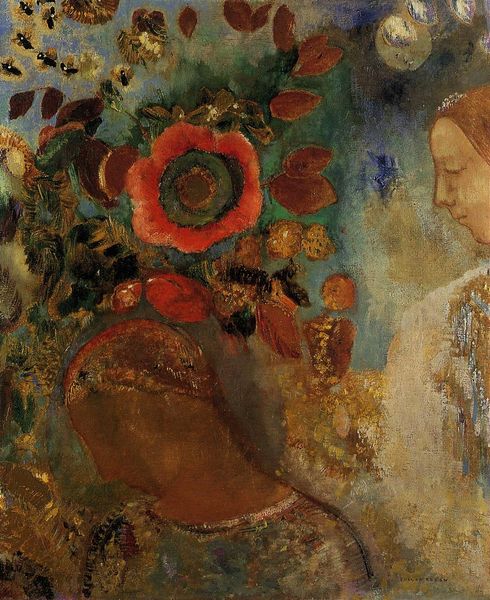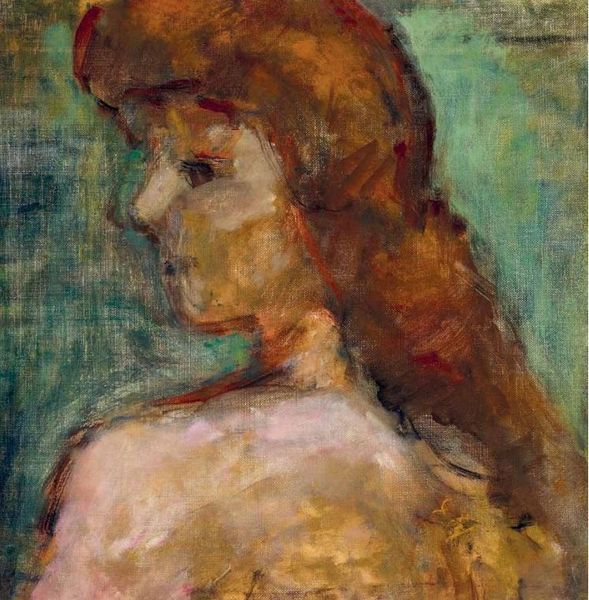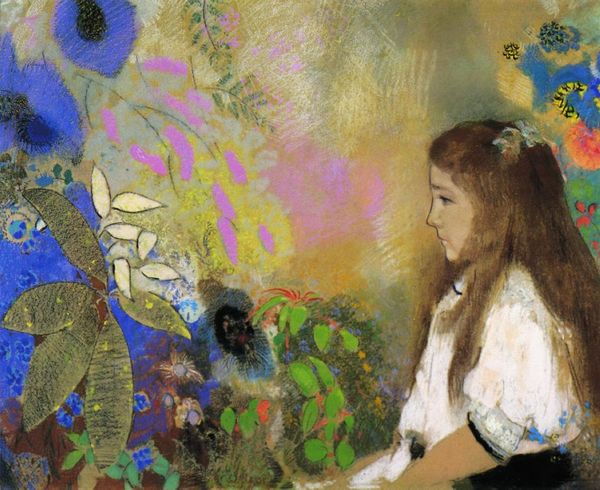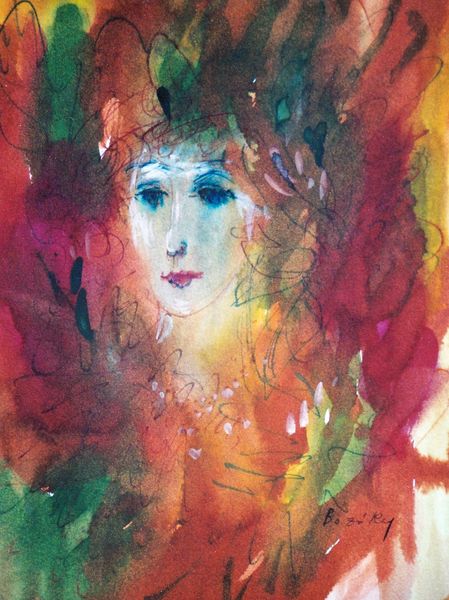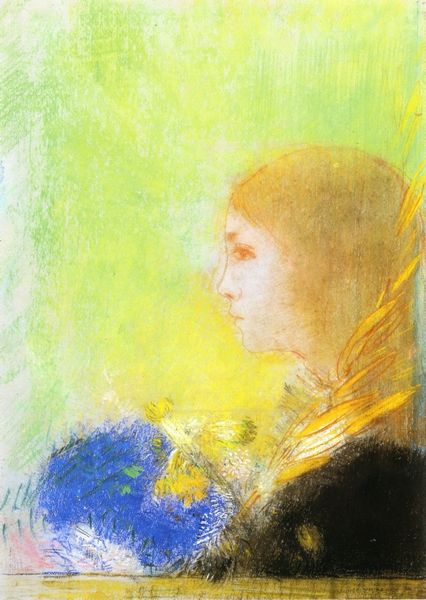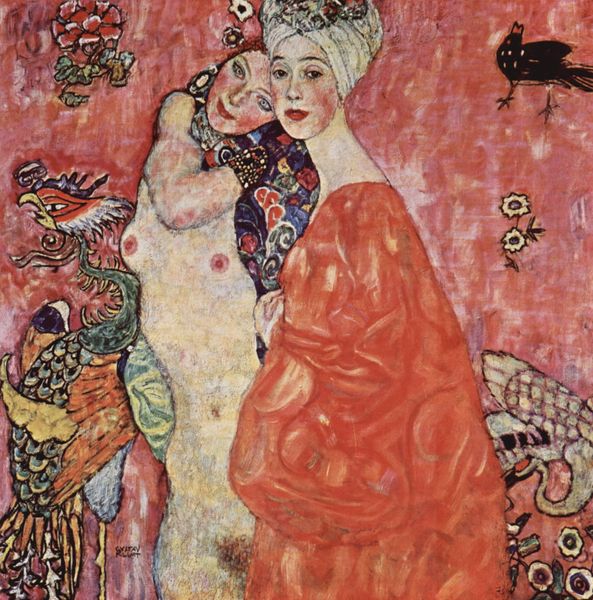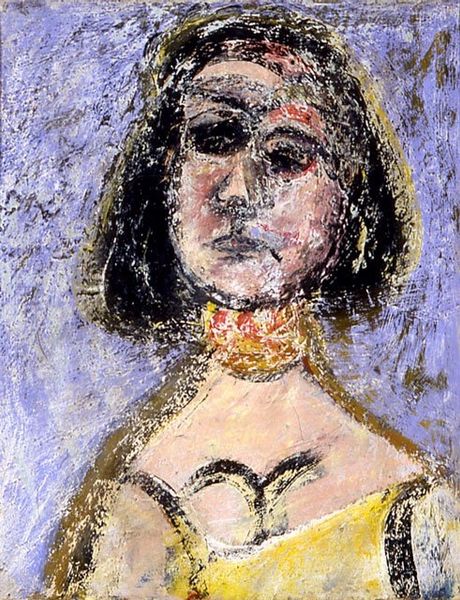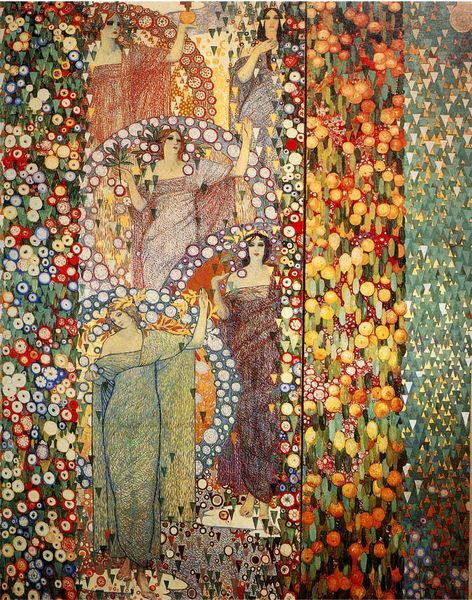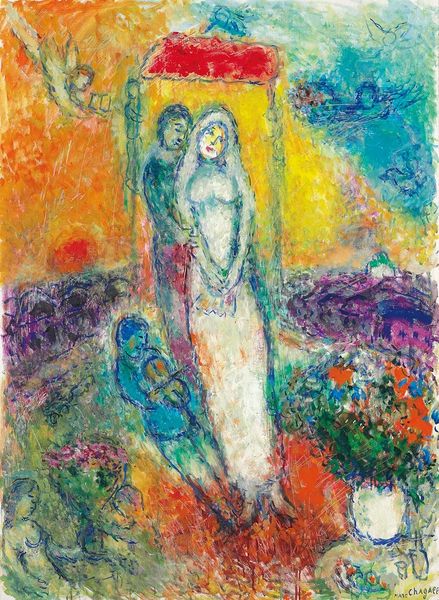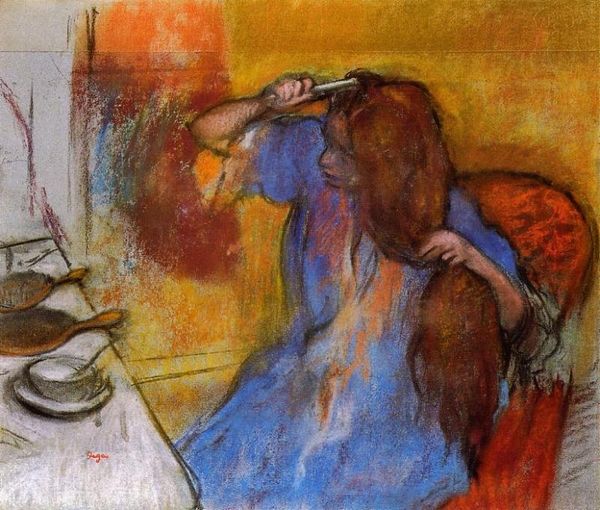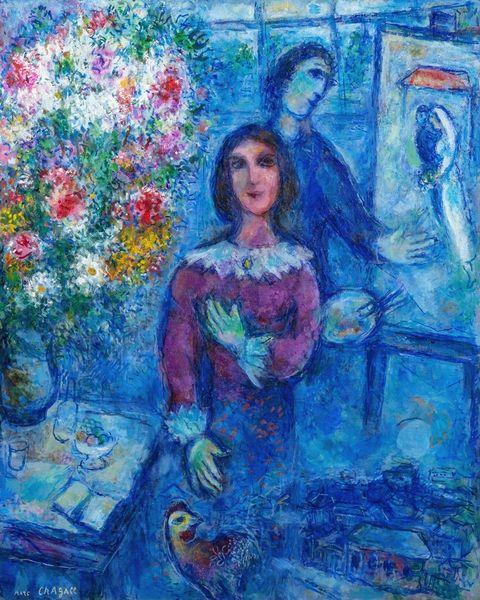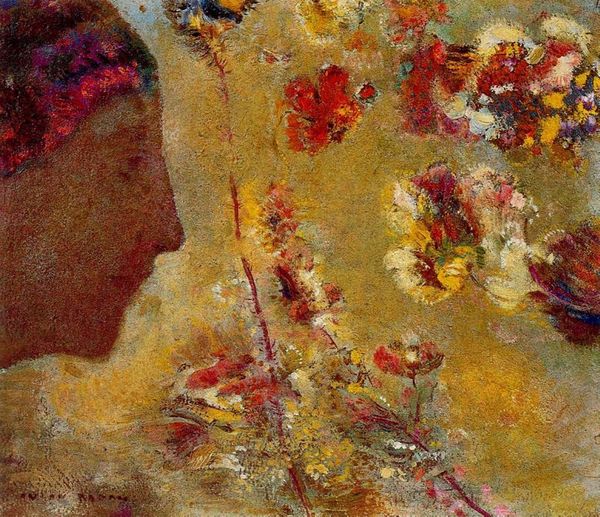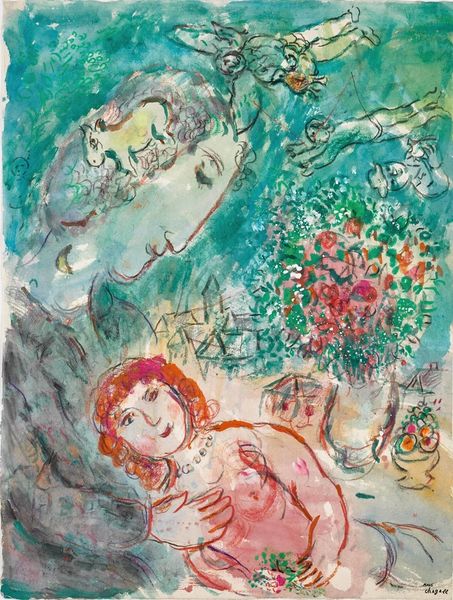
oil-paint, impasto
#
portrait
#
oil-paint
#
landscape
#
possibly oil pastel
#
handmade artwork painting
#
oil painting
#
impasto
#
symbolism
#
post-impressionism
#
female-portraits
#
watercolor
Dimensions: 58.42 x 48.26 cm
Copyright: Public domain
Editor: Here we have Odilon Redon's "Woman with Pillar of Flowers," painted in 1903. The soft, almost dreamy quality is really striking, and she looks quite melancholy. How do you interpret this work? Curator: Redon's symbolism is always so compelling. I see this piece as an exploration of feminine identity within the confines of early 20th century expectations. The "pillar of flowers," so centrally located, feels symbolic of the societal pedestal women were placed upon, both idealized and restricting. Do you notice how the woman gazes downward, almost avoiding connection? Editor: Yes, now that you mention it, there’s a real sense of disconnect in her posture. The pillar seems almost separate from her, a burden rather than a source of strength. Curator: Exactly. Consider also the Post-Impressionist context: artists moving away from strict representation, towards expressing inner worlds. Redon is giving visual form to the internal conflicts women of his era might have faced – the tension between expectation and individual desire. Is there a sense of rebellion beneath the surface? Editor: Perhaps that downwards gaze isn’t just sadness, but also a subtle act of defiance? The impasto, the textured application of paint, seems to vibrate with unspoken feelings. Curator: Precisely! And those ‘handmade’ qualities—as identified by some analysis of Redon’s works – connects us with labor and class, in the domestic space too, and women in that period were mostly stuck doing the same things! The flowers, potentially symbolizing beauty and fertility, are also slightly decaying around the edges. The entire painting creates such ambivalence. Editor: I never considered those historical issues until you pointed them out. Thank you, this has provided a new appreciation! Curator: Likewise! It's always rewarding to find modern connections within historical artworks, viewing them in their socio-historical, theoretical frames.
Comments
No comments
Be the first to comment and join the conversation on the ultimate creative platform.
